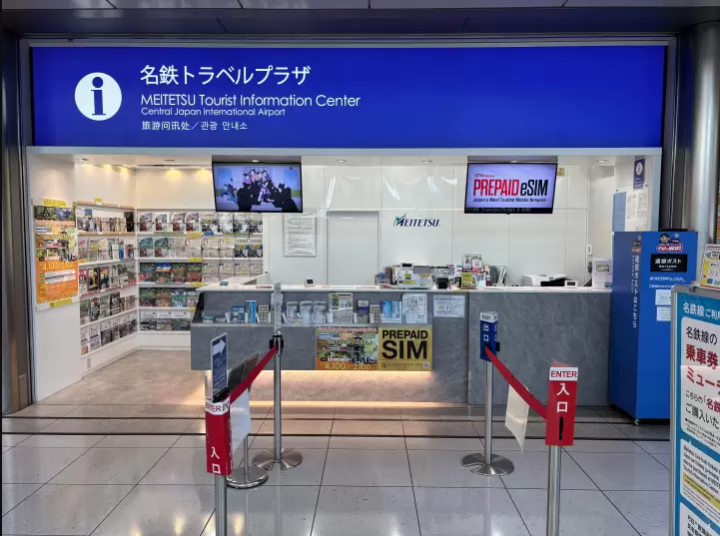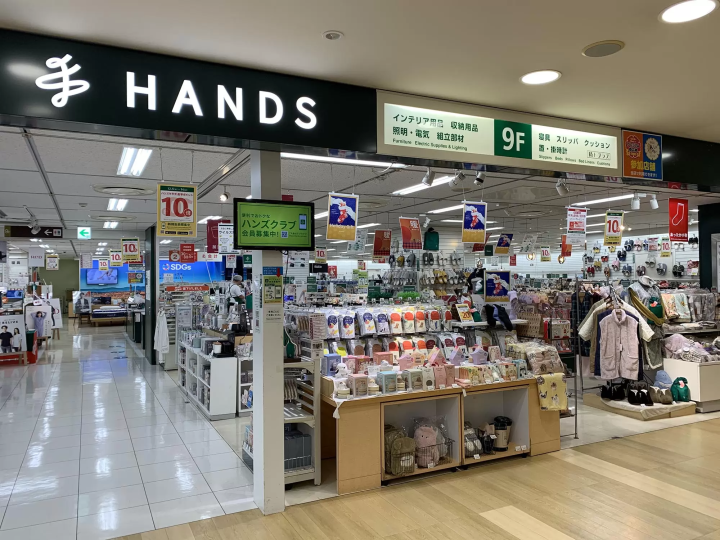Tokyo Retro Walk: Experience Japan’s Unique Atmosphere on a 2-Day Trip

In Tokyo, numerous spots offer a glimpse into the olden days, including temples, shrines, historical buildings, cafes located in traditional houses, rickshaw and kimono experiences, and hotels with views of Asakusa's streets.Join us for a two-day Tokyo retro walking course to explore these locales.
When someone mentions Tokyo you might have a strong image of rows of famous shops only found in trend-setting areas, and clusters of skyscrapers spreading out in front of you. However, today there are still places where you can see traditional townscapes and feel Japan’s unique atmosphere. One of Tokyo’s attractive features is being able to experience both the new and the nostalgic at the same time.
Let’s discover Tokyo’s new charms on a retro walking course that gives you a glimpse into Tokyo’s past. You’ll be able to feel the nostalgic old-town culture of “shitamachi” in such places as Asakusa and Tsukiji. We’ll also visit other spots including Akasaka Palace.
Day One
9:30 Enjoy Breakfast at a Kominka Cafe in Yanaka

The starting point for our adventure is Kayaba Coffee, a restored kominka (traditional folk house) cafe that’s suitable for a retro stroll. This one-of-a-kind spot combines the atmosphere of a nostalgic coffee shop with that of a modern, stylish cafe.

Our recommended item on the enjoyable menu available until 11:00 is the egg sandwichーa very popular dish that uses a traditional recipe. It features sourdough bread which has a slightly sour taste. This is a substantial and filling sandwich!
Kayaba Coffee
https://www.instagram.com/kayabacoffee/ (Japanese)
10:45 Visit Nezu Shrine, a Spot Loved by Literary Giants

Next, after our hearty and satisfying breakfast, let’s try walking off some of those calories by going to Nezu Shrine.
At the present time, seven structures still remain at Nezu Shrine. These include the worship hall (haiden) and karamon gate (Chinese-style gate) which were built during the Edo Period (1603-1868). The shrine has been designated as a National Important Cultural Property.
At Bungo Ikoi no Ishi (“Stone of the Literary Masters”), famous writers including Natsume Soseki and Mori Ogai apparently took rest breaks for contemplation and the development of their creative ideas. So the shrine is also famous for being a spot loved by novelists.

Also, in addition to the lush greenery and a pond with swimming carp, there are many photogenic spots including Otome Inari Shrine with its long line of red torii gates.
Nezu Shrine
https://nedujinja.or.jp/ (Japanese)
12:00 Admire a Black-Lacquered Building Reconstructed in 1935

Next is Yushima Seido Temple, which is known as the birthplace of modern Japanese education. It’s also a mausoleum dedicated to Confucius, and the world’s largest Confucius statue is located on its premises.
After the Great Kanto Earthquake (1923), architect Ito Chuta from Yamagata Prefecture’s Yonezawa City, completed designs for the temple’s reconstruction in 1935. It was a Chinese-style building that incorporated the style of China’s Ming Dynasty.
The Historic Site Yushima Seido Temple
http://www.seido.or.jp/ (Japanese)
13:30 Stroll Around Asakusa in a Kimono!
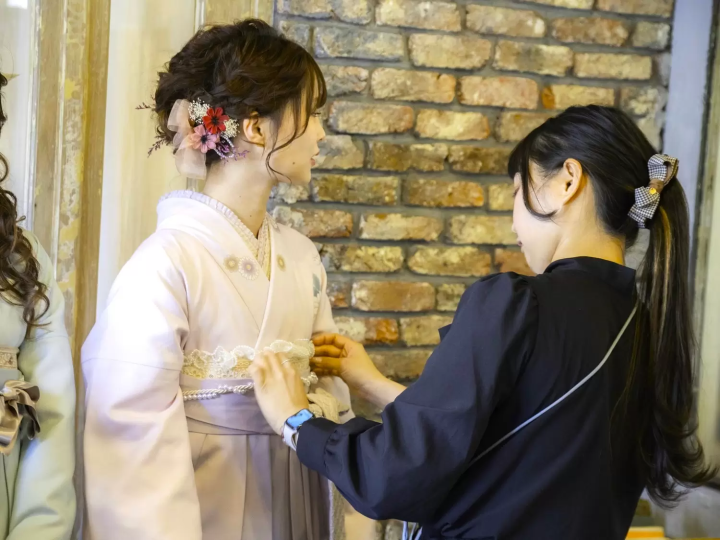
After leaving Yushima, we head for Asakusaーan extremely popular sightseeing spot among domestic and international visitors.
If you’re coming all the way to Asakusa, why not try on a kimono and liven things up a bit?
At Kimono Rental VASARA, feel free to choose the kimono and obi belt of your choice. Then enjoy coordinating your own personalized kimono.
From the undergarment (juban) to the belt (obi), shop staff will assist you in putting on your kimono, so it’ll be a worry-free experience. You can also rent accessories such as hairpins and handbags.
Kimono Rental VASARA
https://vasara-h.co.jp/en/
14:30 Asakusa’s Most Popular Activity! A Visit to Sensoji Temple

One spot that you can’t afford to miss when visiting Asakusa is, of course, Sensoji Temple.
Sensojiーwith a history of more than 1,400 yearsーis Tokyo’s oldest temple. Nakamise-dori extends from Sensoji’s Kaminarimon Gate and is lined with 90 long-established shops, some dating back to the Edo Period, where visitors can enjoy shopping.
On the temple grounds there are many highlights! This includes a five-storied pagoda and Denboin Temple, not to mention the main hall (hondo). As you get pictures taken with you wearing your kimono, please enjoy strolling around the precincts.
Sensoji Temple
https://www.senso-ji.jp/english/
16:00 Enjoy the Sights in Asakusa on a Rickshaw

“I really want to enjoy this kimono experience to the fullest!” If you’ve been saying this to yourself, then how about taking a ride on a rickshaw?
The drivers at Asakusa Jidaiya know Asakusa and the surrounding area inside out, and will take you to all the interesting nearby sights.
Asakusa Jidaiya offers a standard course that takes you to all the popular sightseeing places. But there’s also a special course that allows you to make changes and customize your sightseeing itinerary. With this course you’ll definitely discover some new highlights that you previously didn’t know about.
As you listen to the captivating stories and commentary of the drivers, you’ll enjoy Asakusa even more!
Jidaiya
https://jidaiya.biz/index-e.html
18:00 A Hotel Where You Can Discover Asakusa’s New Charm

After returning our kimono, let’s head for our accommodation, OMO3 Asakusa by Hoshino Resorts.
This hotel is conveniently located just one minute on foot from Sensoji Temple. No matter where you are on the premises you get outstanding views of Sensoji and also Tokyo Skytree®. The view from the OMO Base on the top floor is especially spectacular!
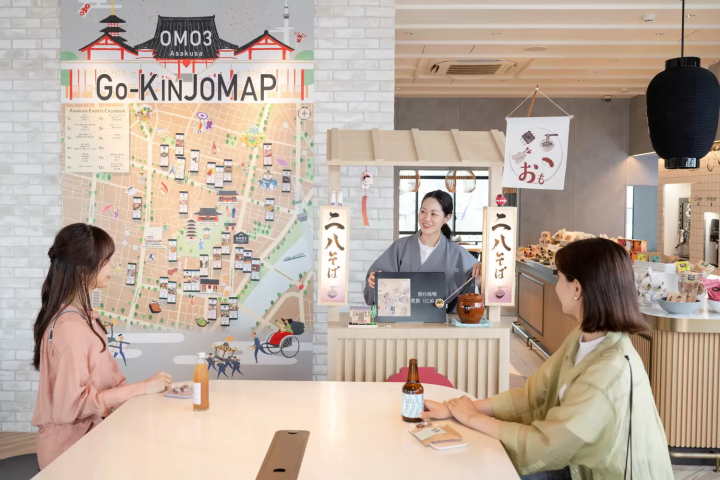
Also, the hotel staff all love Asakusa and have explored the area on foot for themselves. So they can suggest several activities for you including a refreshing morning walk.
OMO3 Asakusa by Hoshino Resorts
https://hoshinoresorts.com/en/hotels/omo3asakusa/
Day Two
9:30 Enjoy an Elegant Breakfast As You Admire the View of Tsukiji Hongwanji Temple

Our second day begins at Tsukiji Hongwanji Temple. First, let’s have breakfast at the temple’s cafe, Tsumugi.

Their highly popular 18-dish breakfast set features side dishes that are carefully prepared one by one. With a lineup of sixteen different side dishes, this is truly a luxurious menu offering.
There’s also a menu that uses ingredients from famous shops in Tsukiji Market. This is ideal for those who want to sample a wide variety of items, little by little.
Tsumugi is very popular in the morning, so it’s advisable to make prior reservations.
Tsukiji Hongwanji Temple Cafe Tsumug
https://tsukijihongwanji.jp/enjoy/meal-stay/
10:30 Tsukiji Hongwanji Temple: A Masterpiece Incorporating Japanese, Western, and Chinese Architectural Elements

Now that we’ve completed breakfast, it’s finally time to visit Tsukiji Hongwanji Temple.
The temple’s exterior was modeled after ancient Asian Buddhist architecture, including that of India. It’s also characterized by the stained glass at the entrance to the main hall (hondo) and by various carvings of animals.

The main hall was designed by Ito Chuta, an architect from Yamagata Prefecture’s Yonezawa City, who once traveled the Silk Road.
Tsukiji Hongwanji Temple has a unique atmosphere that’s different from the image of Japanese temples. Please take a close look at the building’s architectural details.
Tsukiji Hongwanji Temple
https://tsukijihongwanji.jp/global/guide/
12:30 State Guest House Akasaka Palace: Spend Some Luxurious Time at an Architectural Wonder

Capping off our enjoyable trip is a visit to State Guest House Akasaka Palace.
This palace buildingーconstructed in 1909 and Japan’s only example of the Neo-Baroque (*) architectural styleーbrought together the influence of Japan’s architecture, art, and craft world at the time.

At the present time, the main building, garden, and Japanese-style annex are open to the public. The main building and garden, both of which were built when the palace was first established, can be viewed without making a reservation.
Please see the wonders of this architectural technology with your own eyes.
* Neo-Baroque was one of the architectural styles of the 19th centuryーa colorful and glamorous style that Europe was aiming to revive at the time.
*Visiting the gardens does not require a reservation, but reservations are necessary for groups (20 people or more) to visit the main building.
State Guest House Akasaka Palace
https://www.geihinkan.go.jp/en/akasaka/
The stores and locations featured in this article have been chosen by MATCHA’s writers. Their inclusion is not intended as a promotion of any specific stores or establishments within Tokyo and Yamagata Prefecture.
Sponsored by Yamagata Prefecture / Tokyo Metropolitan Government
MATCHA's promotional account for corporate and local government advertising. We aim to provide useful information to our readers in an enjoyable manner.


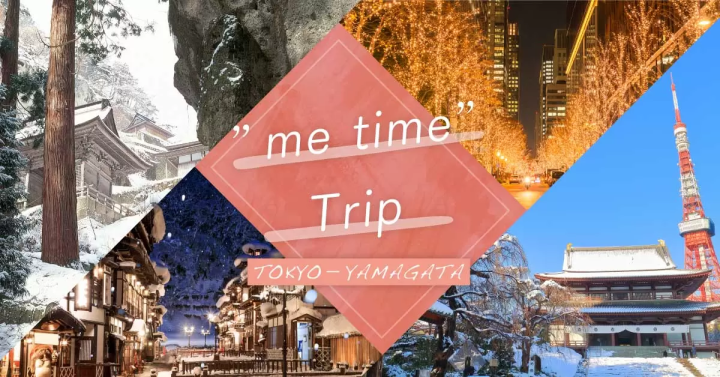
























![[Wakayama Sign] Plums and plum wine](https://resources.matcha-jp.com/resize/720x2000/2025/12/08-252248.webp)

![[2025 Update] Introducing free Wi-Fi spots in Tokoname City , Aichi Prefecture](https://resources.matcha-jp.com/resize/720x2000/2025/12/16-253074.webp)
